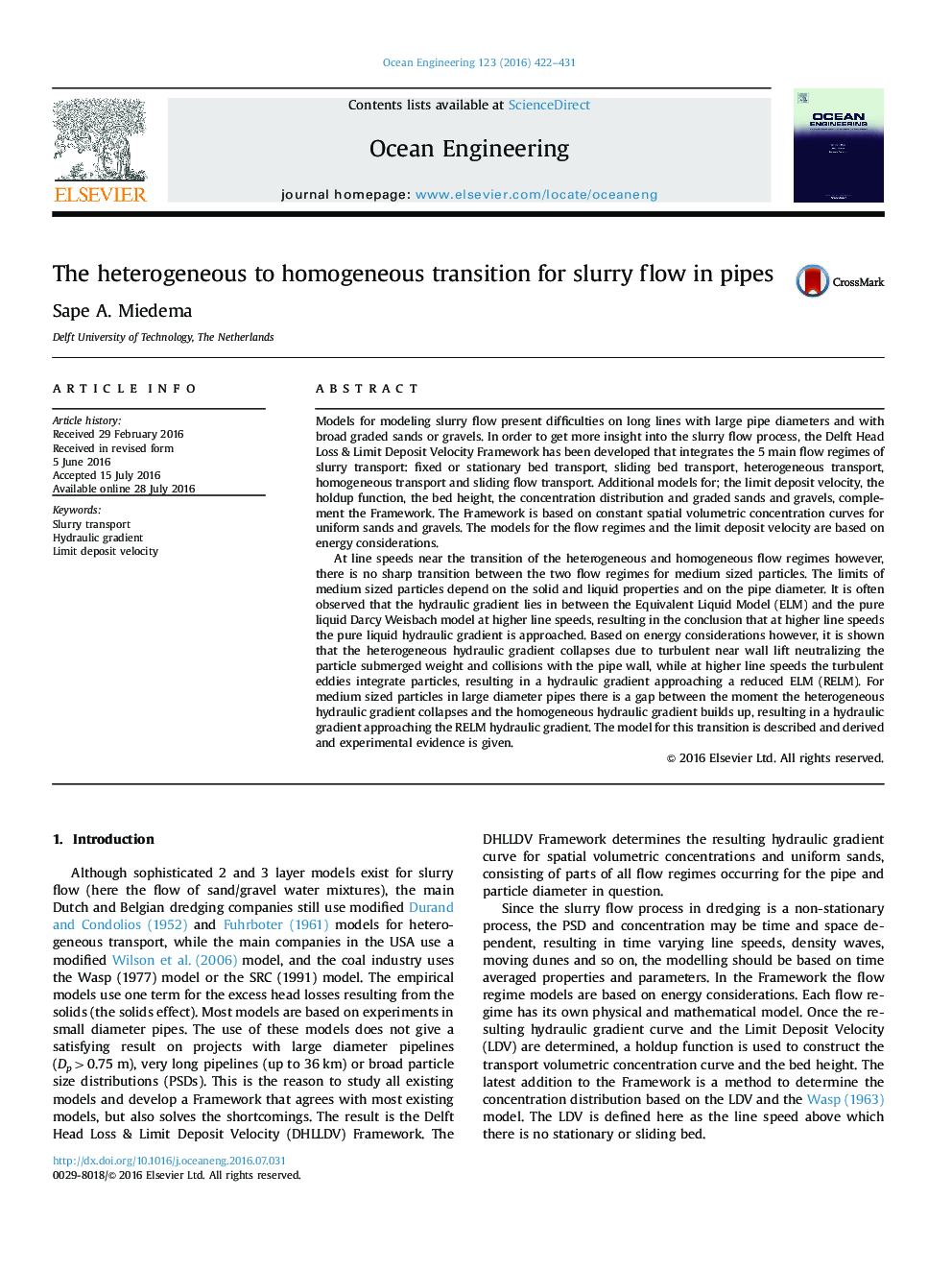| Article ID | Journal | Published Year | Pages | File Type |
|---|---|---|---|---|
| 8064203 | Ocean Engineering | 2016 | 10 Pages |
Abstract
At line speeds near the transition of the heterogeneous and homogeneous flow regimes however, there is no sharp transition between the two flow regimes for medium sized particles. The limits of medium sized particles depend on the solid and liquid properties and on the pipe diameter. It is often observed that the hydraulic gradient lies in between the Equivalent Liquid Model (ELM) and the pure liquid Darcy Weisbach model at higher line speeds, resulting in the conclusion that at higher line speeds the pure liquid hydraulic gradient is approached. Based on energy considerations however, it is shown that the heterogeneous hydraulic gradient collapses due to turbulent near wall lift neutralizing the particle submerged weight and collisions with the pipe wall, while at higher line speeds the turbulent eddies integrate particles, resulting in a hydraulic gradient approaching a reduced ELM (RELM). For medium sized particles in large diameter pipes there is a gap between the moment the heterogeneous hydraulic gradient collapses and the homogeneous hydraulic gradient builds up, resulting in a hydraulic gradient approaching the RELM hydraulic gradient. The model for this transition is described and derived and experimental evidence is given.
Keywords
Related Topics
Physical Sciences and Engineering
Engineering
Ocean Engineering
Authors
Sape A. Miedema,
